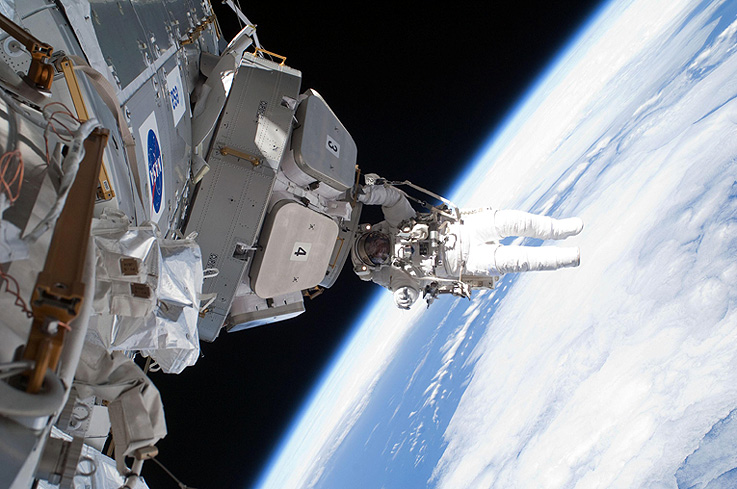Node 3 “Tranquility” is the second connecting node module built by Thales Alenia Space and commissioned by the European Space Agency (ESA) as part of its Columbus Launch barter agreement with NASA. Its twin, Node 2 “Harmony”, also built in Turin, has been docked to the ISS since October 2007. This can-shaped module, about the size of a double-decker bus, will provide berthing locations for future modules or vehicles, while expanding the habitable volume of the ISS by 75 cubic meters. It features standardized interfaces to accommodate research racks and living quarters. Moreover, Node 3 is equipped with the most sophisticated environmental and life support system ever flown in space, which will not only recycle water and generate oxygen but will also purify the atmosphere from toxic substances and measure their components.
In the picture: Floating just below the International Space Station, astronaut Nicholas Patrick put some finishing touches on the Cupola relocated to the Earth-facing port of the just installed Tranquility node, during STS-130 mission. (NASA)
(Aeromedia, February 2010)
